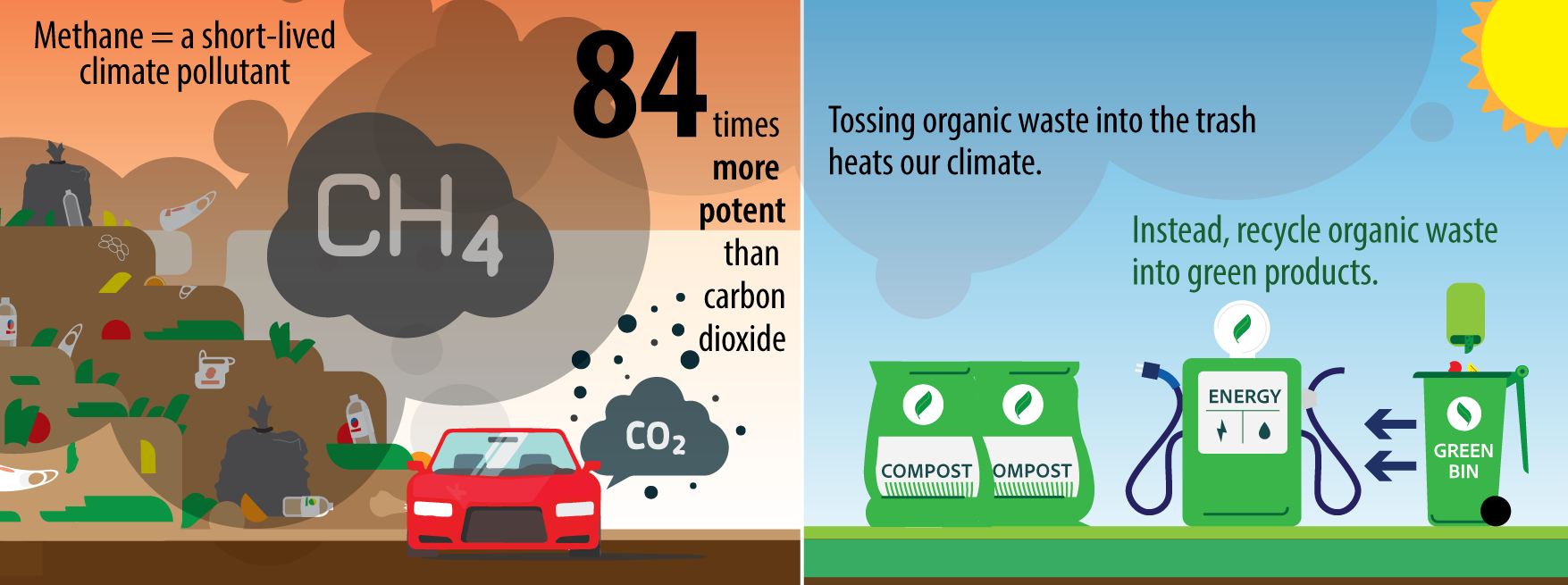Feedstock Profiles
Methane = a short-lived
Climate pollutant
Times more potent than carbon dioxide.
Tossing organic waste into the trash heats our climate.
Instead, recycle organic waste into green products.
Organic materials decompose in landfills and emit 20% of the state’s methane, a short-lived climate pollutant, 84 times more potent than carbon dioxide.
Recycling organic waste into compost, fertilizers, and biofuels reduces organic materials sent to landfills and cuts climate pollution.
Feedstocks
Feedstocks are the raw ingredients for composting – usually actively decomposing solid organic materials. Feedstocks determine the characteristics of the finished compost and influence the composting process.
Important properties of feedstocks include:
- Moisture
- Carbon and nitrogen content
- Physical characteristics
- Level of contamination
It’s easy to compost some common feedstocks, such as leaves, yard trimmings, and food material.
Composters can address more challenging feedstocks by understanding:
- The physical and chemical characteristics
- Available waste management technologies
- Laws and regulations about specific feedstocks
Examples of feedstocks that composters may find challenging:
- Cannabis
- Compostable Plastics
- Biosolids
California law defines organic waste as “food waste, green waste, landscape and pruning waste, nonhazardous wood waste, and food-soiled paper waste that is mixed in with food waste.”
Feedstock Profiles
These feedstock profiles focus on challenging feedstocks and methods to properly manage them.
Cannabis
This Feedstock Profile includes information about cannabis waste that consists solely of cannabis plant material (i.e. organic waste) that is subject to CalRecycle’s organic waste management laws and regulations.
Name and description
Name: Cannabis sativa L. – marijuana

Legal description of feedstock
California regulation defines cannabis waste as “any material intended for disposal that contains cannabis but is not otherwise considered hazardous waste. Cannabis waste consisting solely of plant material shall be considered an organic waste.”
California legalized the use of recreational cannabis for adults in 2018.
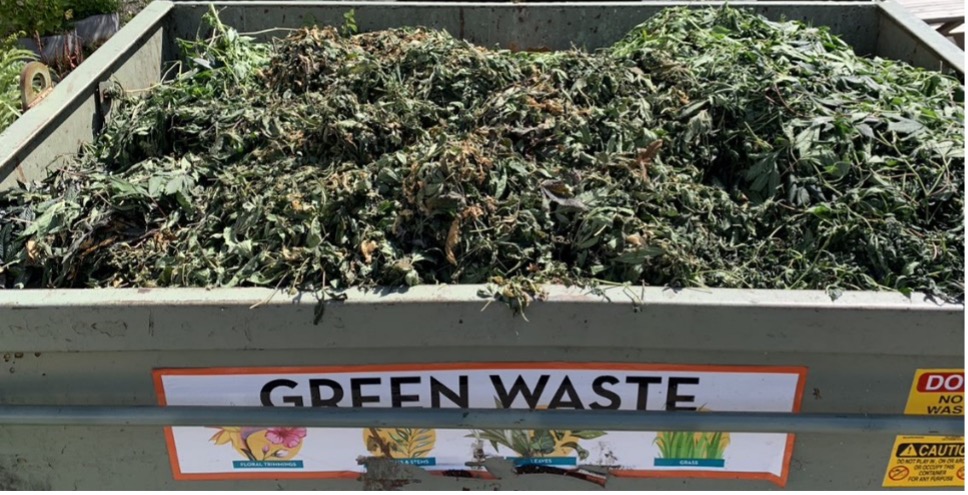
Physical and chemical characteristics of feedstock
Cannabis plants produce chemicals called cannabinoids that can cause mental and physical effects when consumed.
Cannabinoids are accumulated in trichomes that occur mostly on the flowering parts of the plant. Since cannabis goods are primarily produced from the flowers, cannabis grow residuals are mostly unusable plant waste, which can be up to 95% of the weight of the plant.
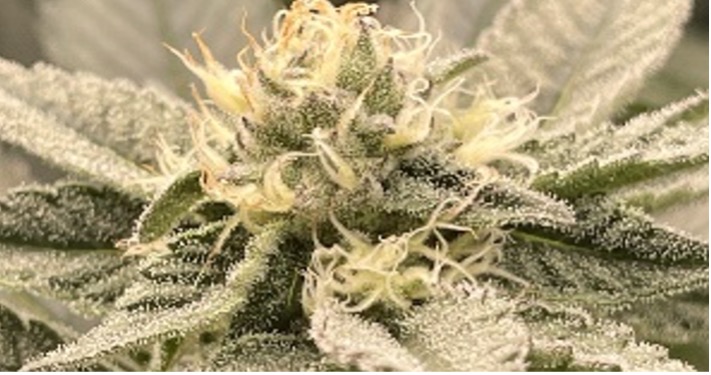
Cannabis Trichomes
The major types of cannabis grow residuals are fan leaves, seeds, stems, stalks1, and growing media/soil/roots.
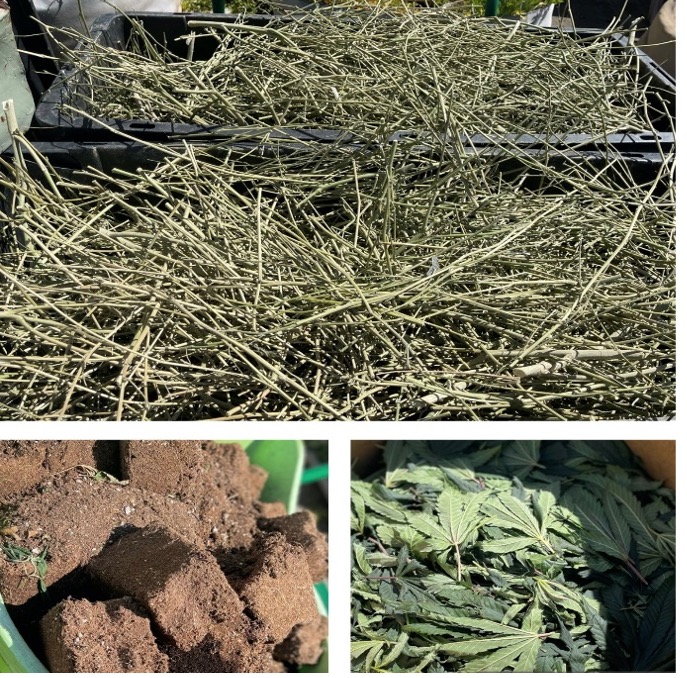
Fan leaves, stems, and growing media
|
Residual Type |
Nitrogen Content |
Carbon Content |
Moisture Content |
Porosity |
|
Fan leaf/seedlings |
High |
Low |
High |
Low |
|
Stem (stalk) |
Low |
High |
Low |
High |
|
Growing media/soil/root stock |
Low |
High |
Low |
Low |
Table 1 above outlines the characteristics of cannabis grow residual types in terms of nitrogen, carbon, moisture, and porosity.
Source: BioCycle
1 – By definition, cannabis stalks are not considered cannabis waste because they are excluded from cannabis. “Cannabis” does not include the mature stalks of the plant, fiber produced from the stalks, oil or cake made from the seeds of the plant, any other compound, manufacture, salt, derivative, mixture, or preparation of the mature stalks (except the resin extracted therefrom), fiber, oil, or cake, or the sterilized seed of the plant which is incapable of germination.
Waste management
Feedstock waste management plan
California law requires a licensee to create and implement a written waste management plan that describes how they will dispose of cannabis waste.
Waste management technologies
Some methods of effective cannabis waste management technologies can be found in the State of Montana’s Cannabis Waste Guidance.
Pre-processing
Grinding is a pre-processing technique beneficial for composting cannabis waste, whether it is composted on-site or in another composting facility.
- While chipper/shredders cost less, they:
- Are loud
- Tend to clog when grinding wet feedstocks.
- Slow-speed grinders:
-
- Cost more
- Good at grinding wet feedstocks and difficult materials like fibrous stems.
- Produce smaller size particles that are better for composting.
-
- Fibrous cannabis stems should be shredded to a fiber length of 1” or less for effective composting.
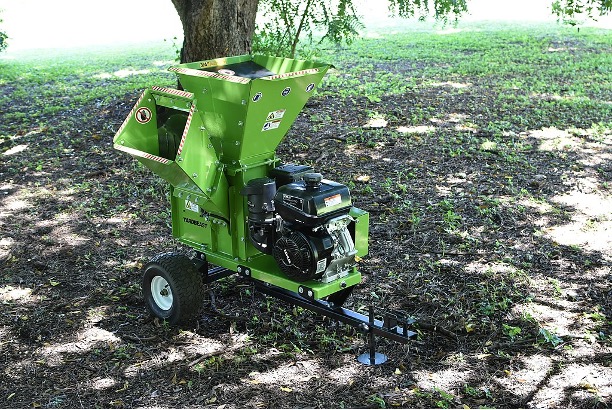
Chipper/shredder
Composting
Create an effective composting recipe:
- Start with the type of feedstocks available for composting. Growers may recycle their cannabis byproducts to grow more plants.
- Using complementary feedstocks, balance:
- Moisture
- Porosity
- Fan leaves do not hold large amounts of air space in a compost pile, especially when shredded.
- A carbon-rich bulking agent can be used to increase porosity in the compost pile.
- Carbon to nitrogen (C:N) ratio
- Fan leaves have relatively high nitrogen content and low carbon content, with a relatively low C:N ratio of about 15-20:1.
- Recommended practices for hot composting:
- Have a starting C:N ratio of 25:1 or 30:1
- Add carbon to facilitate an aerobic composting process.
- Good sources of carbon and porosity are other grow residuals of a cannabis plant, such as stem, rootstock, and growing media, like coir, peat moss, and types of fertilizers, including compost.
Bokashi composting method
Bokashi method is an acidic, anaerobic fermentation process that can be used on-site to treat cannabis waste. When Bokashi compost activator is added to ground/shredded cannabis waste, the microorganisms begin to break down the organic matter. After two weeks of anaerobic fermentation, the resulting liquid can be used as a nutrient-rich fertilizer.
Benefits of Bokashi fermentation:
- Requires a very small footprint.
- Can be done throughout the year.
- Is easily scalable.
- Produces no heat or gases.
- The fermenting container will not attract flies because it is kept sealed.
- Commonly practiced by small-scale growers.
Anaerobic digestion
Anaerobic digestion is an emerging best practice for managing plant waste on-site. This method creates a closed-loop system that provides 100% diversion and reuse. It also enables businesses to capitalize on an asset they already have access to, in addition to the added benefit of reducing waste removal costs.
Anaerobic digestion uses plant waste to:
- Produce methane (CH4) for energy.
- Carbon dioxide (CO2) for the extraction or cultivation systems.
- Produce nutrient-rich fertilizer to reuse for cultivation.
Reuse and challenges
Reuse
Do not overlook the reuse potential of cannabis waste, which include:
- Recycle plant waste by breaking down extremely fibrous material, like stalks, to create mulch for compost piles.
- Use cannabis plant biomass to make paper products, textiles, bioplastics, construction materials, composites, and livestock bedding.
Feedstock challenges
Keeping organic material clean of contaminations like RFID tags, plastic labels, nettings, and hazardous wastes like pesticides is a major challenge.

RFID tag on plant
- Department of Cannabis Control issues Radio Frequency Identifier (RFID) tags to all statewide licensees to use the California Cannabis Track and Trace (CCTT) system. Known as ‘seed to sale’ tracking, it follows the movement of cannabis and its products through the supply chain.
- RFID tags often end up in cannabis waste and are a major source of contamination.
- While they are not a legal requirement in California, they will be around for a while because of how the track and trace contract is implemented.
Technological barriers to optimal cannabis growing have not been researched at the level of other agricultural products.
-
-
- Cannabis growers cannot get the federal tax breaks other industries have for installing new technologies to improve their energy efficiency and minimize carbon dioxide emissions at cannabis cultivation facilities.
- Cannabis does not yet have decades of agricultural research on optimizing growing conditions in greenhouses and indoor facilities.
-
Applicable laws and regulations
Regulatory agencies that are responsible for handling cannabis waste management are:
- Department of Cannabis Control (DCC) is the California state agency that licenses and regulates cannabis businesses.
- Department of Toxic Substances Control (DTSC) is committed to protecting Californians and their environment from exposure to hazardous wastes by enforcing hazardous waste laws and regulations.
- California Department of Food and Agriculture(CDFA) is responsible for protecting and promoting agriculture in California. CDFA was required by law to establish a certification program, OCal, for cannabis that is comparable to the National Organic Program and the California Organic Food and Farming Act.
- California Department of Public Health (CDPH) works to protect the public’s health in the state of California and helps shape positive health outcomes for individuals, families, and communities. CDPH was mandated by state law to develop a program, OCal, for manufactured cannabis products that are comparable to the National Organic Program and California Organic Food and Farming Act.
- California Department of Resource Recycling and Recovery (CalRecycle) brings together the state’s recycling and waste management programs and continues a tradition of environmental stewardship.
Additional resources: Cannabis Waste FAQs
For more information contact: Organic Materials, organics@calrecycle.ca.gov


